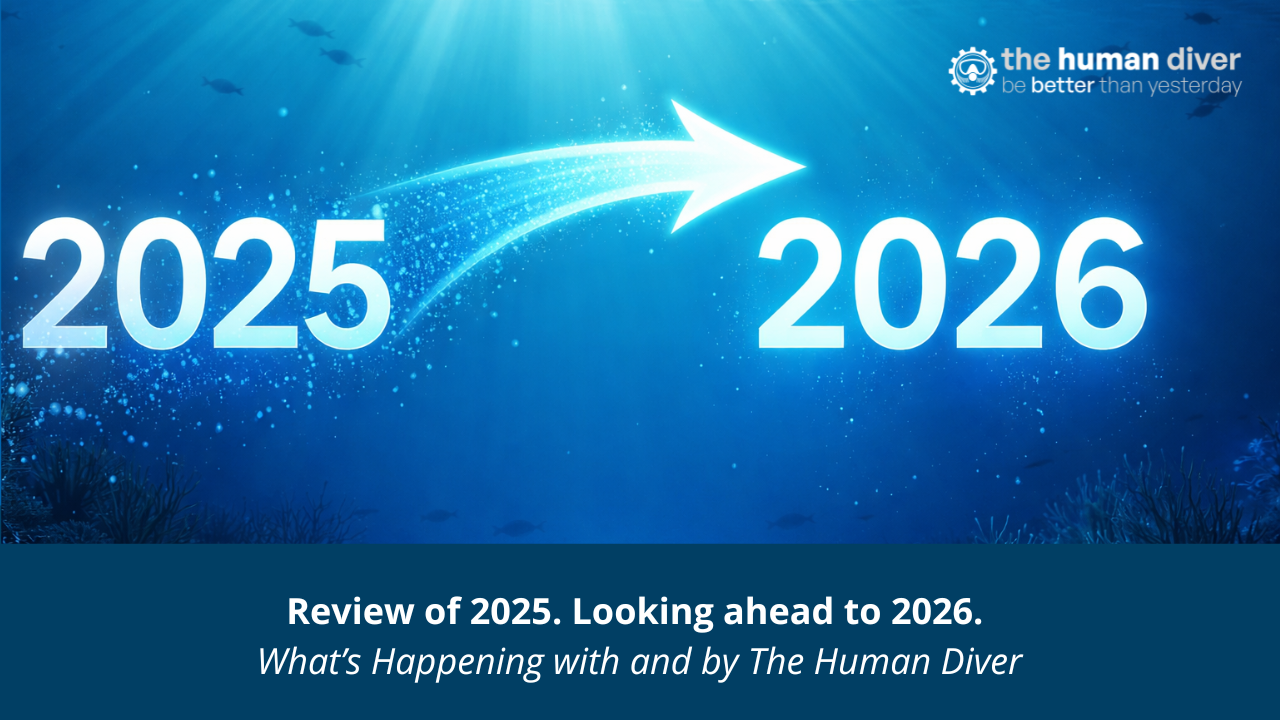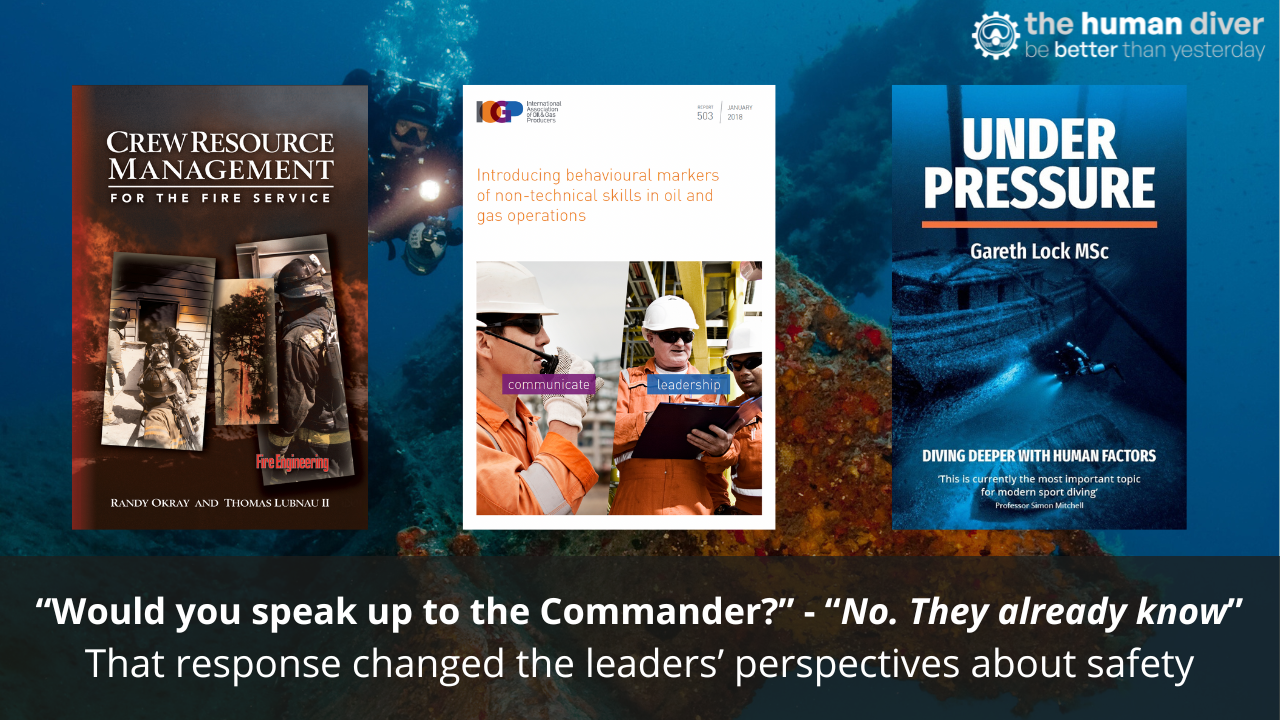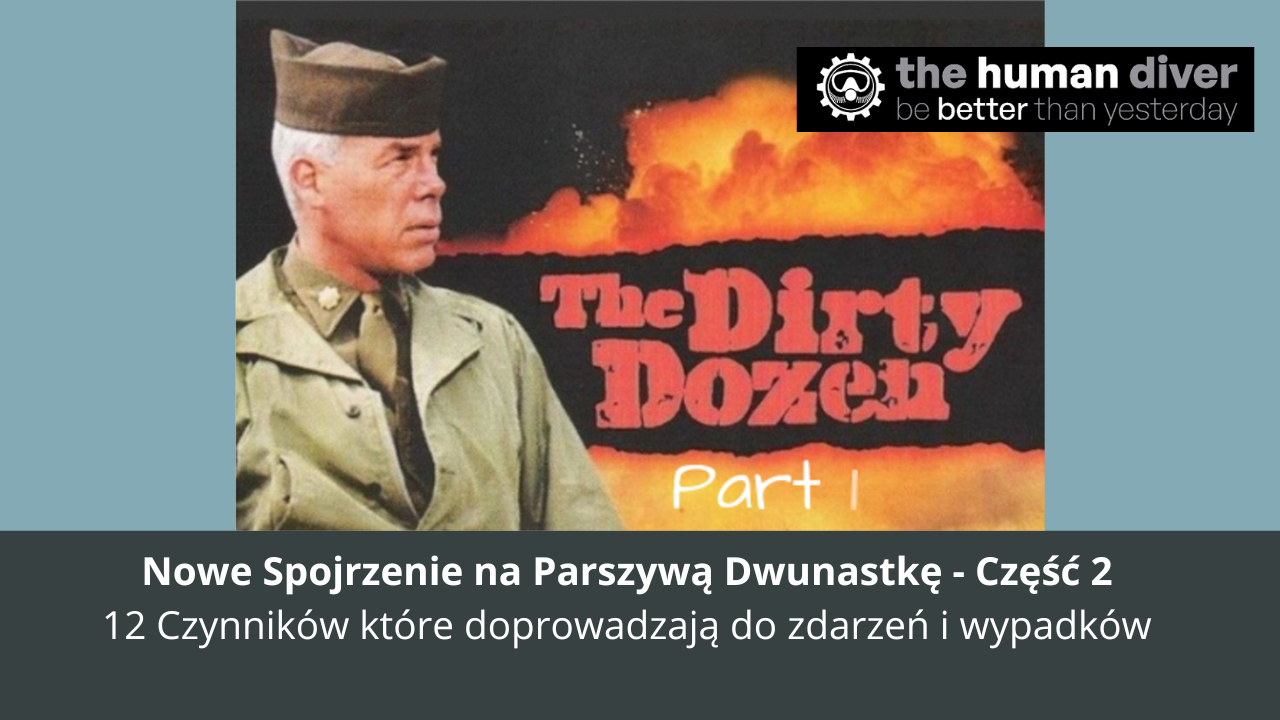
Selective Attention Exists! 5 Tips to Increase Situational Awareness in Diving
Mar 15, 2024A firefighter friend recently asked me what human factors training I would recommend for 2024. I had no doubt about the answer: "situational awareness."

Attention is limited
Situational awareness has become a victim of our modern times. We see it everywhere - people walking into traffic while glued to their phones, drivers running stop signs while looking at something in their cars. It has become such a public safety issue that some cities have posted signs telling people to look up when they are walking on busy streets; an app has even been developed to remind people to do this. We are used to technology informing us of important things, or warning us when we are approaching a safety boundary.
Lack of situational awareness has become a constant and ubiquitous state - a serious problem for society, and therefore also for divers.
Attention is limited. We all realize this to some extent, but we often behave as if we can do countless things at once. Spoiler alert: we can't.

In the spotlight
We often say that situational awareness requires increased attention, that we need to be more careful. But can you be more careful? We are as careful as we can be. But our cognitive resources are taxed by many tasks at the same time. Buoyancy control, navigation, task execution - e.g. deploying a handrail, equipment operation, communication with partners, awareness of where each team member is located, etc. So devoting more attention to one task will mean less attention to another. When the unexpected happens, we have to balance what is happening with many other existing factors.
Trying to see everything at once and do many things at the same time will affect our situational awareness. Good awareness requires cognitive resources, focusing attention like a spotlight on every aspect of the event. Taking the time to really look before deciding what to do next. With practice, this can be achieved relatively quickly and will be more effective than trying to do many things at once. It is important to make a correct analysis, not a rash decision.
One way to free up our resources is to divide up roles and delegate tasks. If other team members can perform or at least verify the execution of tasks, we can have more 'attention to spare' to properly assess the situation. Additionally, each team member will have their own situational awareness to shed light on the darkness of uncertainty.
Our mind will constantly process questions as we absorb the scene: What is happening? Is there something happening that I can't see from here? Is everyone aware of what's going on? What happened a moment ago? This further increases situational awareness, as we naturally explore the potential benefits and pitfalls of our initial assessment.

Five exercises to improve situational awareness
Situational awareness is key to safe and effective emergency response. It will always be important for the entire team. Here are some ways to train and practice alertness and observation while diving.
1. See how difficult multitasking can be. The first step in training divers to be more aware is to show them how selective their attention can be when they focus on a task. Demonstrating simple exercises can make dive team members more open to improving their own situational awareness. Try throwing a ball or two to each other and at the same time answering questions asked unexpectedly by other players. It is also worth getting to know the gorilla experiment on selective attention conducted by Professor Daniel Simons.
2. Active situational awareness training can take many forms. It can include fun exercises, such as asking people to spend five minutes in the kitchen (or other room) and write down three things they never noticed there before. It doesn't really matter what people come up with in this exercise; the point is for them to spend time looking closely at an area they might otherwise take for granted and realize what they have previously overlooked. It is also worth comparing the records between team members.
3. Scenario-based training. Give the team a task to do, e.g. laying a guideline, and put something unexpected in their way. For example, another line or information with tasks. See if the divers notice it at all and how they react.
4. Encourage your team to share as much information as possible about the dive and preparations. The DEBrIEF structure can be used for this. One person will never see or know everything that happened. It is very important to get to know different perspectives. Teams should train all of their members to present context and their own perspective. It is important to build a sense of psychological safety so that they are confident and feel safe sharing what they saw.
5. Don't rush. The rule in diving says: "Stop, breathe, and think" and only then act. Although we've been told this since the first course, we often forget about these basics when focused on the task or overwhelmed by our own need to act. Slowing down in an emergency situation may contradict intuition, but even minor improvements at this stage can make a big difference. Just a few seconds allowing for information processing and better assessment of what you see can make the difference between life and death. In crucial, dangerous, or irreversible situations, it is necessary to slow down and analyze thoroughly, with the choice confirmed by team members.

Want to learn more about this article or have questions? Contact us.











